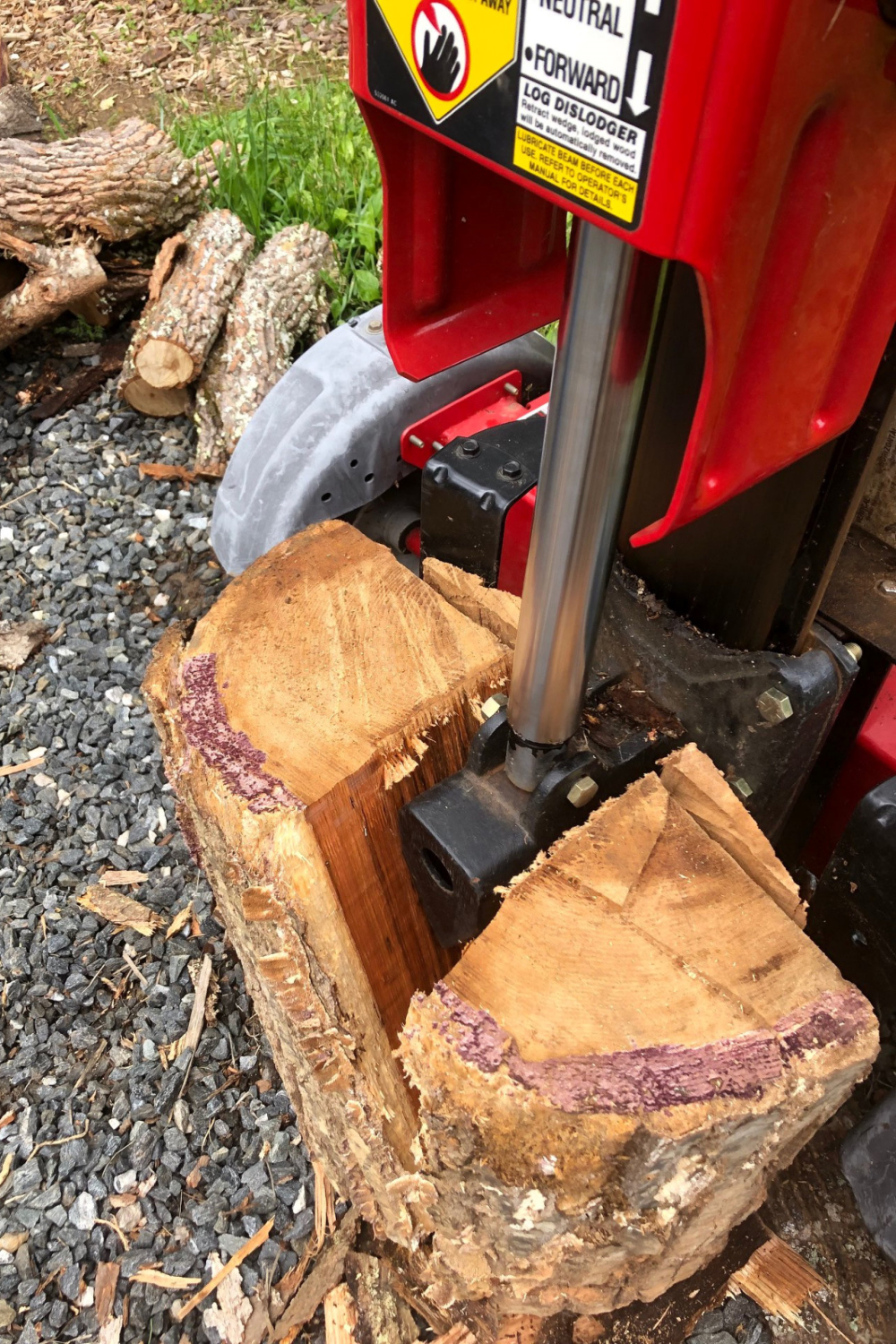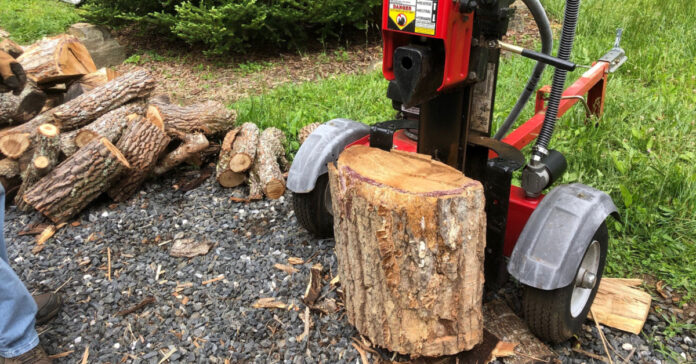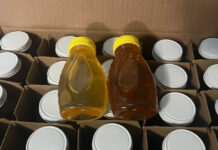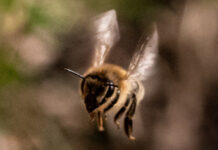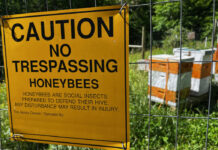How did I spend my Memorial Day weekend? Because we finally got some dry, sunny weather, I worked outside. I cleaned out the garage, dropped off the results at the recycling center and dump, bought a pickup truck bed full of compost, did some yardwork, split those big logs I had piled in my driveway, hiked up the mountain, made some beehive parts, got stung by a bee, and ended up with a mild sunburn on the back of my neck. We also we spent Memorial Day with a friend who is an old Marine and let our dogs play together in his fenced yard.
I’d say that adds up to a pretty good weekend.
Building Beehive Parts
Cleaning out my garage turned up a piece of three-quarter-inch thick plywood that had once been a bar top in the basement. Admittedly, I don’t know much about the different grades of plywood, but this was good stuff. It cut smoothly, leaving no rough patches, and it’s quite solid.
I carefully measured and set my table saw to cut the width of a ten-frame beehive. Then I cut one piece and tried it out. It fit the beehive perfectly, so I cut five more using up most of the wood. I left three pieces long to be solid bottom boards and cut the other three to fit as migratory hive covers. Then I cut the scrap into sides for the migratory covers.
Migratory covers are lids for a beehive that allows the hives to be stacked closely together on flatbed trucks or 18-wheelers for easy transport. I don’t plan to do this with my hives, but it is far easier to build this kind of cover from scratch than it is to build a traditional outer cover.
I picked out a piece of scrap ¾-inch softwood from my ever-growing scrap wood pile and cut ¾”x ¾” pieces to fit on the bottom board. The hive sits on these, leaving a space below the hive for the bees to fly in and out. The three-quarter inch space is the exact size to fit an entrance reducer to assemble them.
After I cut all the pieces, I used glue and my 16-gauge air-powered narrow-gauge staple gun to assemble them. These are the best hive parts I have made yet. I credit the excellent plywood.
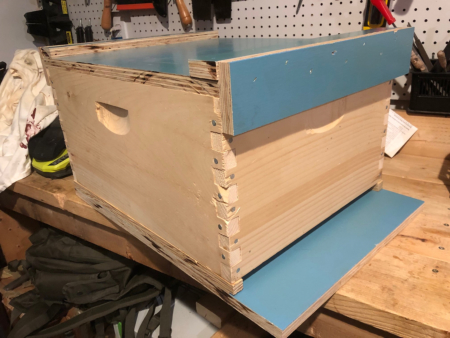
The blue pieces are the ones I just made. I’ll paint the sides and bare wood to keep the weather out. 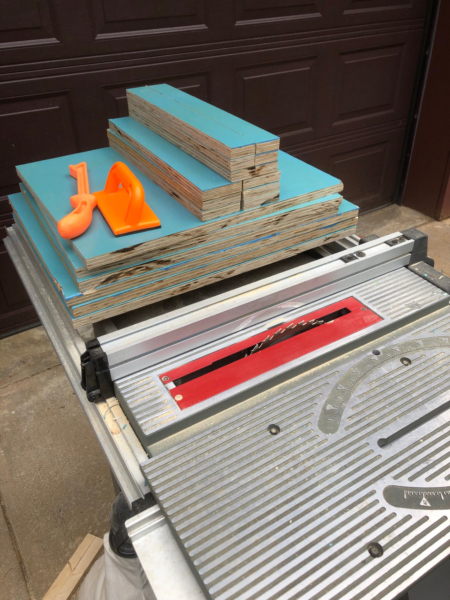
This plywood cut like butter on my old table saw. 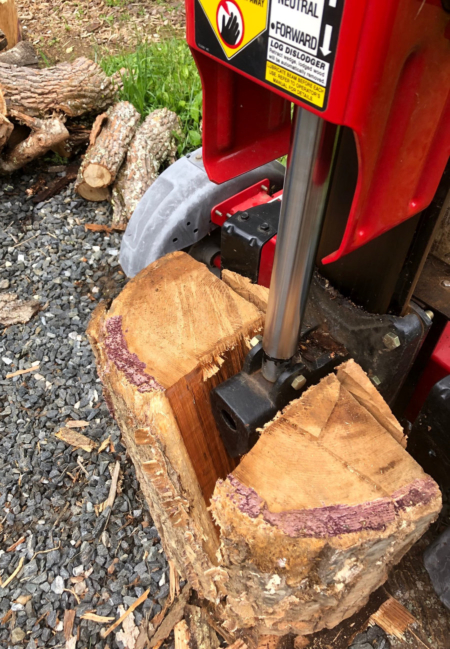
Splitting an oak log into firewood. 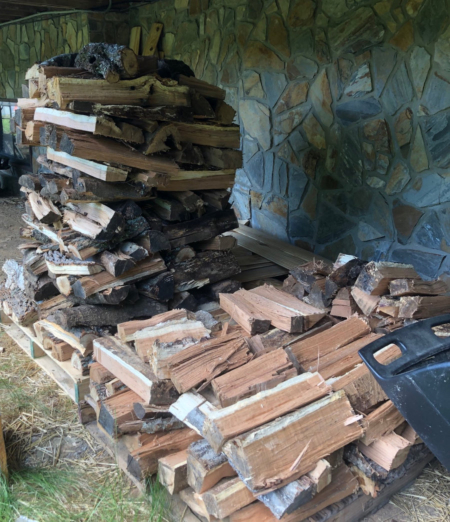
The stack of split wood looks more precarious than it is. Lots of space for air to pass through will help it dry quicker.
Splitting the Firewood
On Saturday, my neighbor brought his 27-ton log splitter over and we split those big rounds I cut two weeks back. Even with 27-tons of pressure, the splitter struggled from time to time when faced with a large oak log. It made it through all of them, and we got the entire lot of wood split. It filled up one pallet and overflowed onto a second. My plan is to let it dry until the 2023/24 winter. In 18 months, it should be perfect firewood.
The need to pile the split wood into a wheelbarrow and then push it up hill before stacking it under the deck where it will stay dry made the task of splitting more difficult. Between cutting, splitting and stacking, this wood is warming more than twice.
I am very thankful for my neighbor and his splitter. That made it go so much faster than splitting it by hand. He also stuck around to help, which wasn’t necessary.
Bee Stings and Treatments
I got my third bee sting of the year. While the chickens free ranged on Sunday morning, I walked down to look at the hives. I noticed a good number of bees bringing in orange pollen. As I got closer to see if I could snap a few pictures, three bees flew at my face. I’m smart enough to know that means to back off, but one bee zapped me on my forehead, right below the brim of my baseball cap. I got some distance and scraped the stinger out with my knife.
In hindsight, my sunglasses may have set them off. I have heard that bees don’t like sunglasses because they look like giant eyes.
After I got the chickens back in their run and fed, I headed inside to look in the mirror. I had a big red blotch on my forehead. My wife suggested I take a Benadryl, which is one thing her doctor recommended when she had a bad allergic reaction to a sting. She had suggested that the other two times the bees had stung me this year – both times were on my hand, a hazard of trying to tend bees without gloves – I had toughed it out figuring that I was building immunity. Not wanting a swollen face, I finally took her advice.
Within half an hour of taking two Benadryl, the swelling was gone and there was no pain. Wow, I thought, a miracle cure! Then I woke up Monday with my left eye swelled partway shut. Two more Benadryl, and the swelling went down. It usually takes a two to three days for the swelling to disappear after I am stung, so you can be sure I’m taking two more before I go to bed.
Orange Pollen?
What is the source of this mysterious orange pollen the bees were bringing in? My guess was tulip poplar, which is in the midst of a very nice bloom, but everything I have found online says their pollen is yellow. Blackberry pollen is grayish. Black locust is supposedly yellowish-green. None of those make sense. Pollen from white clover is yellow to dark yellow. I guess it could be from clover.
I may never know, but I’m looking forward to tasting the honey.
